-
AT&T shows mobile cell towers for disaster communication
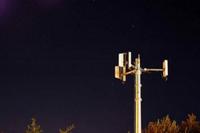
A new family of solutions from AT&T will make business, government, and public safety agencies better prepared for natural or man-made disasters; one of the new offerings, the “Fly-away” solution, packs a small cell site into a suitcase, offering first responders an easy-to-use, transportable system that can bring voice and data coverage to an area where disaster has knocked out communication channels
-
-
Wyoming braces for spring floods
The Wyoming Office of Homeland Security is readying local and state agencies for projected spring floods and is urging local residents to prepare themselves as well; this year large snow packs from heavy winter storms have increased the likelihood of flooding; state officials are encouraging families to keep a three-day emergency kit loaded with food, water, clothing, flashlights, medicine, and important documents; last year floods hit Wyoming causing major disruptions, particularly in Fremont County; this year state officials hope to minimize the impact of floods with early preparation
-
-
Cooling pools or dry casks for nuclear waste: which is safer
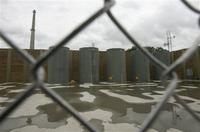
There are two ways to store nuclear waste: in pools of water, where the densely packed uranium rods are cooled by a constant flow of circulating water, or in dry casks — typically barrel-shaped steel-and-concrete structures that stand twenty feet high and sit outdoors — where the uranium loosely packed rods are cooled by passive air; there are 65,000 tons of nuclear waste in the United States, more than in any other nation, and this amount grows by about 2,200 tons each year; the Fukushima disaster demonstrated that dry casks were able to withstand the 11 March combination of earthquake and tsunami much better than cooling pools; the U.S. Nuclear Regulatory Commission must now decide whether cooling pools are safe enough to store nuclear waste, and even whether densely packing nuclear waste is safe
-
-
Lessons from Japan's tsunami could dramatically shift building codes
American tsunami experts and engineers are scouring the devastation wrought by the 11 March earthquake and tsunami to analyze how structures fared during the natural disasters and what lessons can be applied to U.S. building codes; experts are particularly concerned about the toppling of a reinforced-concrete building as that has been the baseline for tsunami construction and evacuation procedures; experts were stunned by the devastation and are concerned about America’s West Coast which is significantly less prepared than Japan for an earthquake or tsunami; in particular experts are concerned about Oregon which shares many geological similarities to Japan’s northeastern coast; researchers hope to learn valuable lessons that will minimize the destruction from a similar event in the United States
-
-
Much of earthquake damage in Japan caused by "liquefaction"
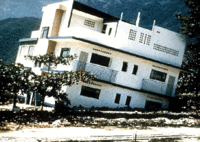
The massive subduction zone earthquake in Japan caused a significant level of soil “liquefaction” that has surprised researchers with its widespread severity, a new analysis shows; the findings also raise questions about whether existing building codes and engineering technologies are adequately accounting for this phenomenon in other vulnerable locations, which in the United States include Portland, Oregon, parts of the Willamette Valley, and other areas of Oregon, Washington, and California
-
-
U.S. tsunami warning system outdated
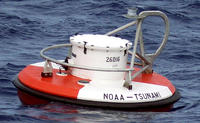
The two tsunami warning centers the National Oceanic and Atmospheric Administration (NOAA) operates are “remarkably outdated” and need upgrades, experts say; both centers need upgrades with common sets of hardware and software tools, which both lack today; it is estimated that design of the architecture and purchase of new hardware would cost about $2 million — a small investment to improve the warnings of potentially devastating events
-
-
Twitter and natural disasters: lessons from Japan
Researchers from Kobe City University of Foreign Studies surveyed and questioned Twitter users and tracked updates from people in the disaster-struck area on the social media site two weeks after the Tohoku earthquake and devastating tsunami of 11 March; Twitter was the only functioning communication tool immediately after the earthquake; the researchers found that there benefits for using Twitter, such as bringing information to people involved in a disaster and to those hoping to hear news; there was a downside, though: Twitter helped spread unverified rumors and misinformation, causing people to panic in areas where there was no reason to panic, thus making the work of rescuers and service authorities more difficult; one solution: have the government itself use Twitter to offer reliable information to all involved
-
-
Disaster-zone phone communication software available for free
Australian researchers developed software which enables mobile phones to communicate during a disaster; it will be freely available to the public by the end of the year thanks to the support of the Dutch NLnet Foundation; the software can be used on compatible mobile phone handsets to create an alternative “network” where conventional mobile phone coverage has been destroyed or does not exist
-
-
Streamlined approach to U.S. preparedness
The administration has released a new presidential policy directive on national preparedness; the directive, the result of a comprehensive review of national preparedness policy, replaces Homeland Security Presidential Directive 8; the administration says that the directive seeks to move away from burdensome requirements and instead build the key capabilities the nation needs to confront any challenge
-
-
Waste management critical to natural disaster recovery
Disasters can typically generate up to fifteen years worth of a community’s solid waste over a few days, with the potential to overwhelm day-to-day solid waste operations and to lead to years of disruption; FEMA estimates that debris removal accounted for 27 percent of their total disaster response costs for those U.S. disasters between 2002 and 2007; prolonged problems with the management of solid waste can lead to public and environmental health issues; slow management of solid waste can also impede economic recovery by inhibiting rebuilding activities
-
-
Japan sets up reconstruction planning structure
Japan has announced that three newly created bodies will be in charge of Japan’s reconstruction: a 15-member panel of experts called the Reconstruction Design Council which will offer plans and programs for reconstruction; a cabinet task force, in which all cabinet members will be members, which will be responsible for implementing the programs; and a panel of reconstruction of the ruling Democratic Party of Japan, which will be in charge of coordinating relevant policies with the opposition parties
-
-
Five U.S. nuclear plants in earthquake zones
Five active U.S. nuclear reactors — the Diablo Canyon Power Plant and San Onofre Nuclear Generating Station in California; the South Texas Project near the Gulf Coast; the Waterford Steam Electric Station in Louisiana; and the Brunswick Steam Electric Plant in North Carolina — are situated in seismic activity-prone zones
-
-
Easing contamination fears in Japan's food industry

With much of Japan’s manufacturing sector, land, and critical infrastructure badly damaged from the March 11 earthquake and tsunami, dairy and rice manufacturers have struggled to produce enough to feed the nation; Japan produces all of its own milk, rice, and yogurt products, but domestic plants are operating far below full capacity; shortages may persist into the summer; as production ramps up, fears of contamination from radiation leaked from the Fukushima Daiichi nuclear power plant may dampen consumption; one analyst suggests that Japan institute a food tracking program that will allow consumers to track the production of food every step of the way to help ease fears
-
-
Geologists push for earthquake early warning system despite costs
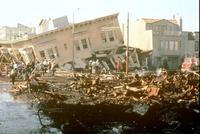
Geologists on the West Coast are actively pushing for an earthquake early warning system, similar to the one deployed in Japan; the Japanese warning system helped save lives as it gave people valuable extra time to prepare before the devastating 9.0 magnitude earthquake and tsunami hit; scientists want to place a similar network of data transmitters and information receivers along fault lines up and down the West Coast; geologists fear that a major impediment to the installation of the system would be its cost during times of fiscal austerity; the system would take roughly ten years to build and an estimated $145 million, making the project nearly impossible to undertake without federal funding
-
-
Portable military barriers help Canadian city in flood fight
Canada is using a new technology to prevent flood damage in Manitoba; the one-meter-square wire cages can be unfolded and quickly filled with dirt or mud; they can also be linked for a long row that can be set up far quicker than it takes to sling sandbags; the barriers have been used by the U.S. military to protect embassies from terrorist attacks, and have also been used for flood protection in the United States
-
More headlines
The long view
The Surprising Reasons Floods and Other Disasters Are Deadlier at Night
It’s not just that it’s dark and people are asleep. Urban sprawl, confirmation bias, and other factors can play a role.
Why Flash Flood Warnings Will Continue to Go Unheeded
Experts say local education and community support are key to conveying risk.
